1. Early Life and Background
Shirley Temple Black's early life was marked by a supportive family environment that nurtured her extraordinary talents, laying the foundation for her future stardom.
1.1. Childhood and Education
Shirley Jane Temple was born on April 23, 1928, at Santa Monica Hospital in Santa Monica, California. She was the third child of homemaker Gertrude Temple and bank employee George Temple. The family, residing on Rockingham Avenue in Brentwood, Los Angeles, had Dutch, English, and German ancestry. She had two older brothers, John and George Jr. Her mother, Gertrude, actively encouraged Shirley to develop her singing, dancing, and acting abilities from a very young age. Gertrude also meticulously styled Shirley's hair in her signature ringlets, ensuring exactly 52 curls for each film shoot.
At the age of three in 1931, Shirley's mother enrolled her in Meglin's Dance School in Hollywood. She was a bright child, with an IQ equivalent to a 10-year-old at age six, and over 155 at age twelve, placing her in the "genius" category. Despite her demanding film schedule, she received private tutoring at the 20th Century Fox studio, studying subjects several grades above her age level.
1.2. Early Activities
While attending the dance school, Temple was discovered by Charles Lamont, a casting director for Educational Pictures. She was signed to a contract in 1932, leading to her appearances in the studio's "Baby Burlesks" and "Frolics of Youth" series. The "Baby Burlesks" were 10-minute comedy shorts that satirized contemporary films and events, featuring preschool children in all roles, often dressed in adult costumes over diapers. While some found these controversial, viewers were more receptive to her portrayal of a mischievous child in the "Frolics of Youth" series, where she played Mary Lou Rogers.
Temple quickly became the breakout star of these series, and Educational Pictures promoted her to 20-minute comedies. To help fund production costs, Temple and her child costars modeled for breakfast cereals and other products, effectively making her image a commercial brand from an early age. She was also lent to other studios for minor roles, including her first feature film, The Red-Haired Alibi (1932) for Tower Productions, and various parts for Universal Pictures, Paramount Pictures, and Warner Bros. Pictures in 1933. A persistent rumor claimed she auditioned for a lead role in Hal Roach's Our Gang (later known as The Little Rascals), but her autobiography, Child Star, denies this.
2. Child Acting Career
Shirley Temple's rise to stardom was swift and impactful, establishing her as a cultural icon and a dominant force in Hollywood during the 1930s.
2.1. Start as a Child Star
After seeing Temple in one of her Frolics of Youth films, Fox Film Corporation songwriter Jay Gorney arranged a screen test for her for the film Stand Up and Cheer! (1934). Temple auditioned on December 7, 1933, and won the part, signing a contract for 150 USD per week with a seven-year option. Her mother, Gertrude, was hired at 25 USD per week as her hairdresser and personal coach.
Stand Up and Cheer! became Shirley's breakthrough film, where her charm was immediately evident to Fox executives. Her performance of "Baby, Take a Bow" with James Dunn led to her being rushed into another film with Dunn, Baby Take a Bow. Her third film, also with Dunn, was Bright Eyes (1934), a movie specifically written for her. The success of these films was so significant that it saved Fox Film Corporation from bankruptcy during the height of the Great Depression.
President Franklin D. Roosevelt himself praised her performances, stating, "It is a splendid thing that for just 15 cents, an American can go to a movie and look at the smiling face of a baby and forget his troubles." Her professionalism was remarkable; at just five years old, she memorized all lines in a script, including those of other characters, and mastered complex dance routines before filming began. Director John Ford reportedly praised her as "One-take Shirley" for her efficiency.
2.2. Peak Popularity and Cultural Icon
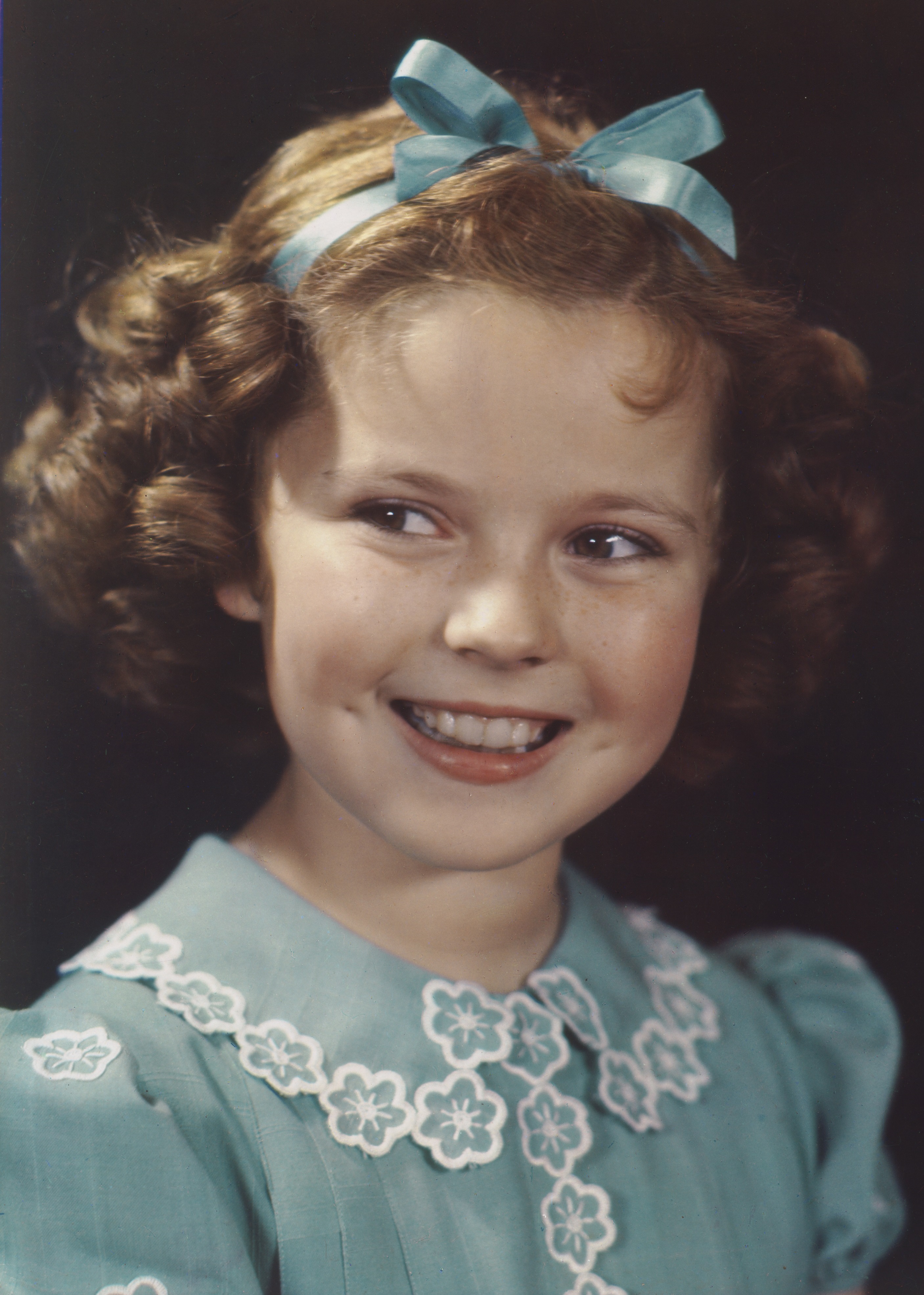
Following the success of her initial films, Temple's parents realized she was not being adequately compensated, and her image was being used commercially without authorization. They hired lawyer Lloyd Wright, leading to a revised contract on July 18, 1934, which raised Temple's salary to 1.00 K USD per week and her mother's to 250 USD per week, plus a 15.00 K USD bonus for each completed film. By the end of 1935, her salary reached 2.50 K USD per week. Beyond her film earnings, she received approximately 4.50 M USD in licensing fees from merchandise, about 15 times her film salary. In 1937, her annual earnings were 307.01 K USD, making her the highest-paid actor in Hollywood, surpassing even established stars like Clark Gable and Greta Garbo.
Temple was the most popular celebrity to endorse merchandise for children and adults, rivaled only by Mickey Mouse. Shirley Temple dolls, produced by Ideal Novelty and Toy Company, accounted for almost a third of all dolls sold in the country by the mid-1930s. Her image also appeared on a wide array of products, from clothing and accessories to even cigars. Counterfeit items were rampant, though lawsuits were filed to control the unauthorized use of her likeness.
Her popularity was immense, receiving over 4,000 fan letters a week, a figure that soon exceeded 10,000, necessitating a staff of ten full-time secretaries at Fox. She was chosen as "America's Angel" by The New York Times in 1937 and was often referred to as "America's Princess," becoming a symbol of national pride and hope during the Great Depression. This image was carefully cultivated by Fox, who provided her with a private house and toys on the studio lot and restricted her interactions with other child actors to protect her "well-behaved child" image. This was a stark contrast to other studios like Metro-Goldwyn-Mayer (MGM), where child stars like Judy Garland and Mickey Rooney faced significant personal struggles.
Her fame led to security concerns, including kidnapping threats and an instance where an unstable woman attempted to shoot her. Despite these dangers, Temple maintained a cheerful and professional demeanor.
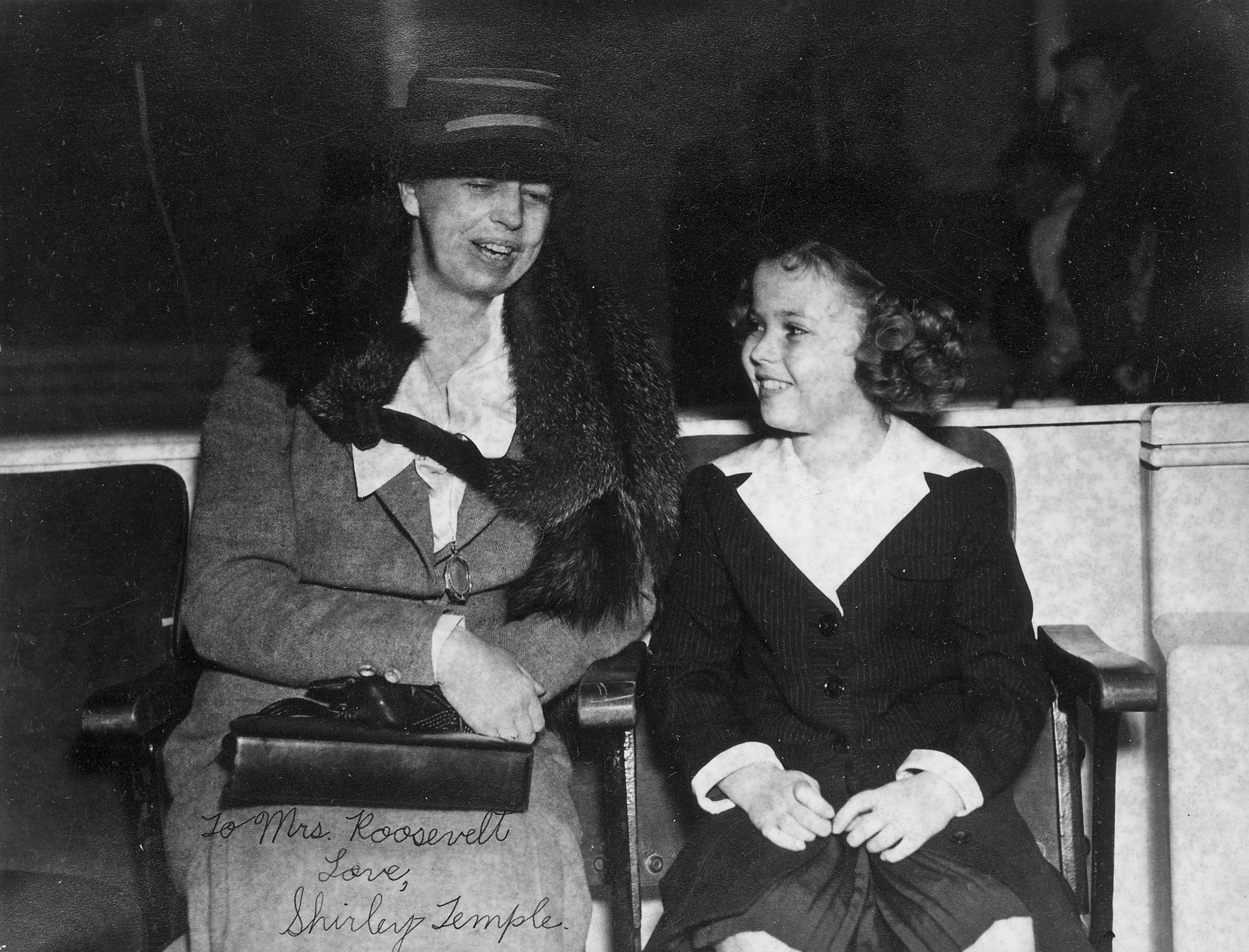
2.3. Representative Works and Performances
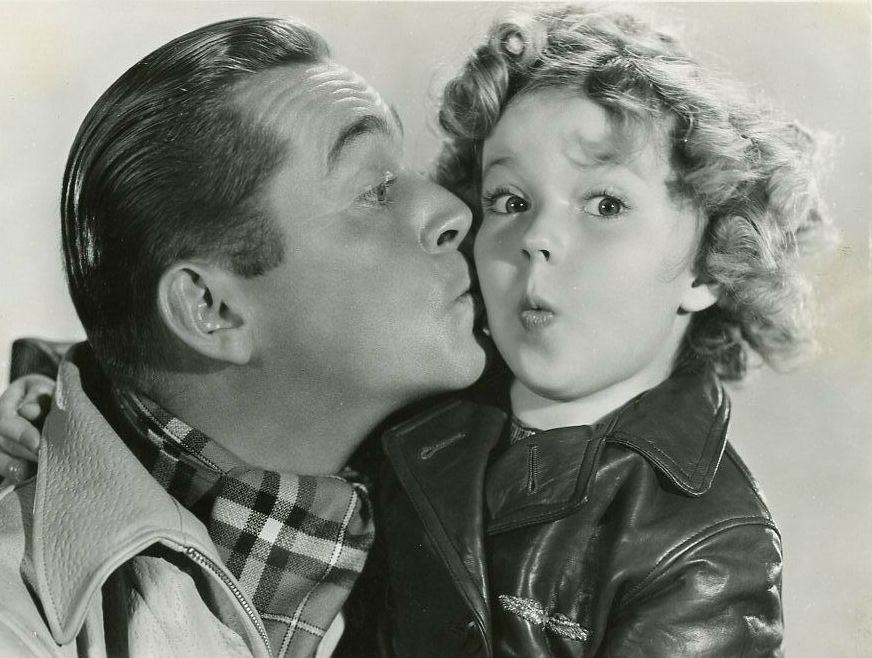
In almost all of her films, Temple played the role of an emotional healer, mending rifts between estranged family members or conflicting ideologies. Often lacking one or both parents, her characters formed new families with those worthy of her love and protection. Producers frequently contrasted her diminutive stature, sparkling eyes, dimpled smile, and 56 blond curls with strapping leading men like Gary Cooper, John Boles, Victor McLaglen, and Randolph Scott.
Her signature song, "On the Good Ship Lollipop", from Bright Eyes, became a massive hit and her enduring theme song. Other popular songs from her films included "Animal Crackers in My Soup" from Curly Top (1935) and "Goodnight My Love" from Stowaway (1936). Her songs continue to be loved, appearing in American elementary school music textbooks and even in Disney's "Sing-Along" series.
Temple's dancing talent, particularly her tap dancing, was widely admired. She was often paired with the renowned African American tap dancer Bill "Bojangles" Robinson in four films, starting with The Little Colonel (1935), in which they performed the famous staircase dance. Their pairing was historically significant as the first Black and white dance duo in American cinema. However, scenes of Temple holding Robinson's hand were sometimes cut before being shown in Southern U.S. cities due to racial prejudice.
In 1935, Temple received a miniature Juvenile Oscar for her outstanding contribution to motion pictures in 1934, making her the youngest recipient of an Oscar in any category, a record that remains unbroken. She also became the youngest actress to leave her handprints and footprints in the wet cement at Grauman's Chinese Theatre in Hollywood. During the ceremony, one of her baby teeth fell out, and she quickly removed her shoes and placed her bare feet in the concrete to divert attention from her mouth, a testament to her quick thinking.
While the role of Dorothy in The Wizard of Oz was initially intended for Judy Garland, MGM briefly considered Temple for the part. However, negotiations between Fox and MGM failed. Temple herself later revealed a more disturbing reason for not taking the role: during a preliminary interview with MGM producer Arthur Freed, he exposed himself to her. When her nervous giggles were the response, Freed ended their contract. Temple, who became a symbol of "American Innocence," thus escaped the predatory "casting couch" culture prevalent in Hollywood.
Her first Technicolor film was The Little Princess (1939), released as her contract with Fox was nearing its end. She also starred in The Blue Bird (1940), an attempt by Fox to replicate the success of The Wizard of Oz, but it was not commercially successful.
2.4. Teenage Years and Transition
As Temple entered her teenage years, the transition from child stardom proved challenging. In September 1939, as her contract with 20th Century-Fox concluded, her mother enrolled her in the Westlake School for Girls, a prestigious private school. Temple, who had been privately tutored, initially found it difficult to adapt to a traditional school environment. However, her classmate June Lockhart noted that Temple "integrated herself right away" and seemed "delighted to be there," frequently participating in school dances and extracurricular activities. Students reportedly did not treat her differently despite her successful film career. She graduated from Westlake in May 1945.
Her final two films for 20th Century-Fox, The Blue Bird (1940) and Young People (1940), were financial failures. The Blue Bird was rushed into production after the success of The Wizard of Oz but its symbolic script was ahead of its time, and its German-inspired costumes were poorly received amidst the outbreak of World War II and the Nazi invasion of Poland.
After leaving 20th Century-Fox, Temple signed with Metro-Goldwyn-Mayer (MGM). However, her only film for MGM was the relatively unsuccessful Kathleen (1941). MGM, then dominated by stars like Judy Garland, was not the right fit for her. She then signed with David O. Selznick's production company, known for high-quality films. Although Selznick's focus was on adult dramas, Temple successfully transitioned into a teen idol, starring in films like Since You Went Away (1944), The Bachelor and the Bobby-Soxer (1947) with Cary Grant, and Fort Apache (1948) with John Wayne and Henry Fonda. All her films under Selznick were profitable.
Despite her success, her roles remained limited to "bright, wholesome, dreaming teen" types, as her innocent image, established during childhood, made it difficult for audiences to accept her in more mature or "darker" roles. For instance, in That Hagen Girl (1947), a line where Ronald Reagan's character said "I love you" to her was cut to preserve her wholesome image. She formally announced her retirement from full-length films in 1950 at the age of 21.
3. Later Acting Career
Following her retirement from feature films, Shirley Temple Black continued to engage with the entertainment industry through radio and television, maintaining her public presence.
3.1. Post-Acting Career Ventures
Temple briefly had her own radio series on CBS called Junior Miss, which debuted on March 4, 1942, and ended on August 26, 1942.
From 1958 to 1961, Temple hosted, narrated, and occasionally acted in an anthology series of fairy tale adaptations titled Shirley Temple's Storybook. The hour-long program aired as specials on ABC in 1958, then every third Monday night starting in 1959. In 1960, the series moved to NBC as The Shirley Temple Show. Her gentle voice and wholesome demeanor made her an ideal host for children's programming, and the shows garnered high ratings. She also made guest appearances on other TV shows, such as The Red Skelton Show in 1963.
Her television appearances sparked a "second boom" in her popularity. During this period, redesigned Shirley Temple dolls by Ideal Toy Company, children's clothing resembling her film costumes, and other accessories saw a significant increase in sales. The dolls sold 300,000 units in six months, and a series of picture books sold 225,000 units in three months. Her childhood films became a staple during holiday seasons on television.
In the 1980s, her films were all colorized and frequently aired on Disney Channel, leading to a "third boom" in sales of videos and LaserDiscs. Fox Broadcasting Company continued to air her films annually on Christmas Day and her birthday, boosting DVD sales. In 1999, she hosted AFI's 100 Years...100 Stars awards show on CBS. In 2001, Temple served as a consultant for the ABC-TV film production of her autobiography, Child Star: The Shirley Temple Story, filmed in Port Melbourne, Australia. In 2004, she collaborated with Legend Films to supervise the colorization of several of her early black-and-white films, often basing the color palettes on her own memories. On September 12, 2005, the Screen Actors Guild (SAG) presented her with a Lifetime Achievement Award.
4. Diplomatic and Public Service Career
Shirley Temple Black embarked on a remarkable second career in public service, demonstrating a profound commitment to diplomacy and international relations.
4.1. Political Involvement
Temple became active in the California Republican Party after her retirement from film. In 1967, she ran unsuccessfully in a special election for California's 11th congressional district as a conservative Republican. She came in second in the primary with 34,521 votes (22.44%), behind Pete McCloskey. While she supported the U.S. involvement in Vietnam at the time, she also advocated for an early and honorable withdrawal, strongly opposing President Lyndon B. Johnson's escalation of the war. She also campaigned for tax cuts, environmental protection, and stricter regulations on drugs and pornography. While generally supportive of women's advancement, she expressed skepticism about the radicalization of the women's liberation movement. Despite her loss, her political engagement marked the beginning of her significant public service career.
She was extensively involved with the Commonwealth Club of California, a public-affairs forum, serving as its president in 1984.
4.2. Diplomatic Service
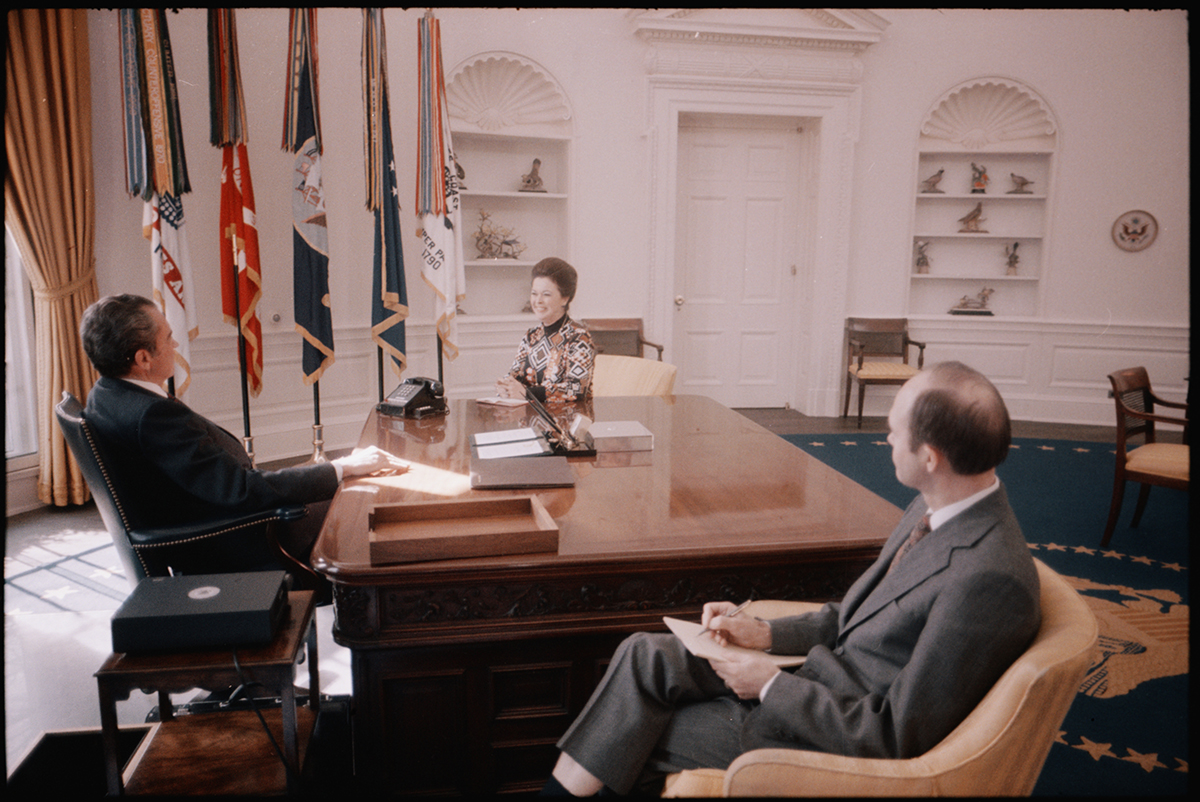
Temple's entry into foreign service began after her congressional campaign when Henry Kissinger was reportedly impressed by her knowledge of South West Africa at a party. In 1969, President Richard M. Nixon appointed her as a delegate to the 24th United Nations General Assembly (September-December 1969), where she worked on issues related to the environment, youth, and human rights under Ambassador Charles Yost. She became known as "America's secret weapon in diplomacy" due to her diligence and charisma. She personally drafted statements on increasing refugee problems in Africa and influenced resolutions for prompt responses from the United Nations High Commissioner for Refugees. She also strongly advocated for the People's Republic of China's admission to the UN, which eventually occurred in 1971.
Her diplomatic skills were evident in an encounter during a conference in Egypt, which at the time had no diplomatic relations with the U.S. President Anwar Sadat, a fan of her film Heidi, expressed his desire for peace with Israel to her. Temple immediately relayed this to Secretary of State Kissinger and sent Sadat a copy of Heidi upon her return, contributing to the eventual restoration of U.S.-Egypt relations and the 1978 peace treaty between Israel and Egypt.
President Gerald R. Ford appointed her United States Ambassador to Ghana (December 6, 1974 - July 13, 1976). Despite initial resistance from some Ghanaian men due to her gender, she worked 17-hour days as the head of 108 staff members, earning their admiration. She made an effort to connect with the local population, distinguishing herself from previous ambassadors. During her tenure, she narrowly avoided a cobra attack while trying to rescue a kitten and skillfully navigated a cultural faux pas during a meeting with a powerful tribal chief. In 1975, she was installed as an honorary deputy paramount chief of the Oguaa people of Ghana.
In 1976, she was considered a potential running mate for Gerald Ford in that year's presidential election, but Bob Dole was ultimately chosen. She was then appointed the first female Chief of Protocol of the United States (July 1, 1976 - January 21, 1977), responsible for all ceremonial affairs at the White House and hosting foreign dignitaries. She also accompanied the President on overseas visits.
After Ronald Reagan's victory in the 1980 United States presidential election, Temple hoped for another ambassadorship or cabinet position. While she represented Reagan at inaugural celebrations in Paris, she received no new postings, possibly due to her support for George H. W. Bush in the 1980 Republican primaries.
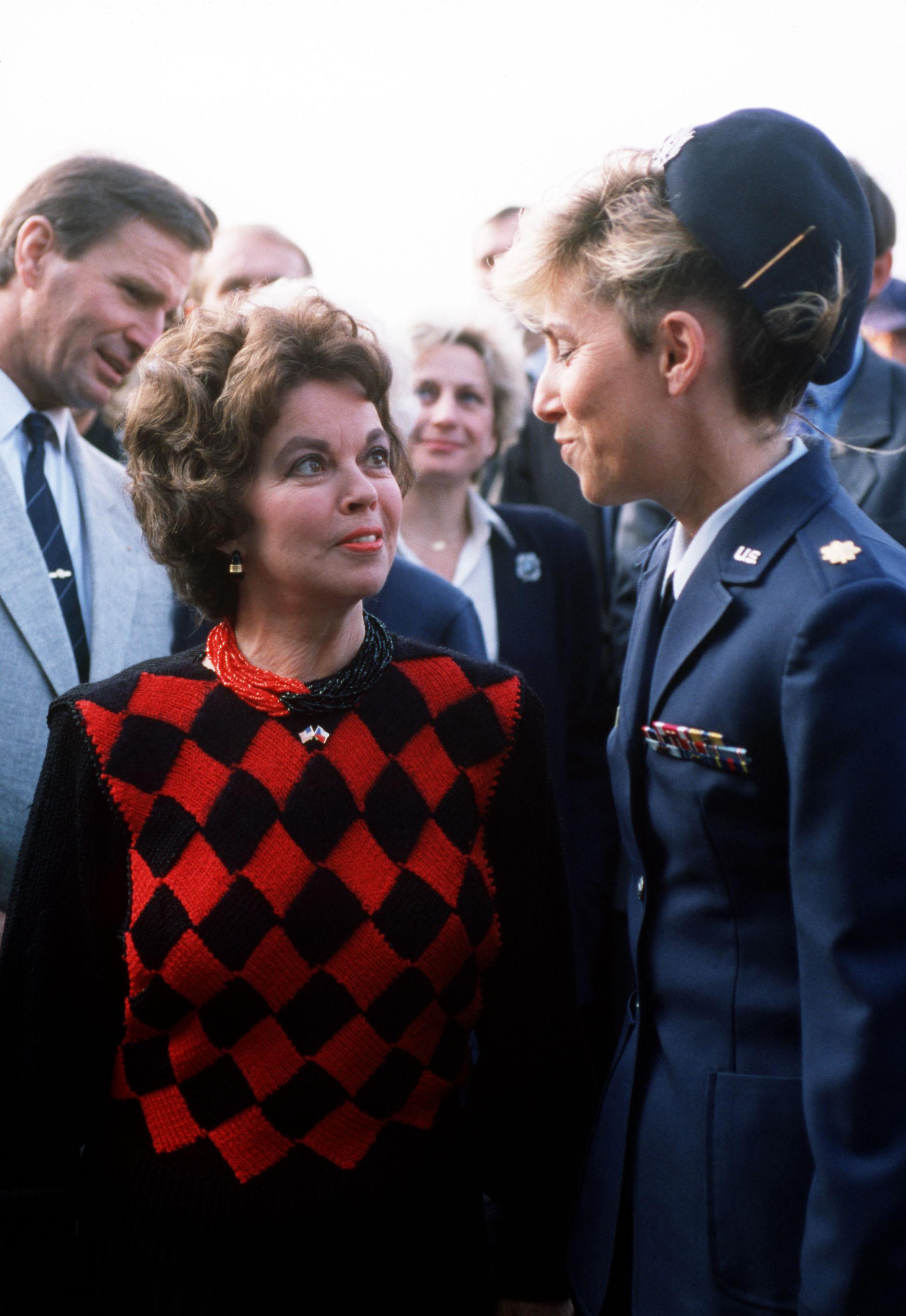
President George H. W. Bush appointed her United States Ambassador to Czechoslovakia (August 23, 1989 - July 12, 1992), making her the first and only woman in this role. Temple had a significant personal connection to Czechoslovakia; she was in Prague in August 1968 as a representative of the International Federation of Multiple Sclerosis Societies when Soviet-backed forces invaded, crushing the Prague Spring. Stranded at a hotel, she witnessed an unarmed woman being gunned down by Soviet forces, an image that stayed with her for life.
Later, as ambassador, she actively supported anti-communist dissidents and was present during the Velvet Revolution, which brought about the peaceful end of communism in Czechoslovakia. She took the unusual step of personally accompanying Václav Havel on his first official visit to Washington, D.C., traveling on the same plane. In 1987, she was named the first Honorary Foreign Service Officer in U.S. history.
After retiring from public office in 1998 at age 70, she continued to serve on various boards, including The Walt Disney Company (1974-1975), Del Monte Foods, Bancal Tri-State, and Fireman's Fund Insurance. She was also a member of the Council on Foreign Relations, the Council of American Ambassadors, and a co-founder of the Multiple Sclerosis International Federation. Her efforts led to the "Shirley Temple amendment" to the Wages and Hours Law, which prohibited the production and sale of child pornography involving children under 16, significantly regulating a previously unchecked industry.
5. Personal Life
Shirley Temple Black's personal life saw her navigate two marriages and raise a family, while also publicly addressing a significant health challenge.
5.1. Marriage and Family
In 1943, at the age of 15, Temple met 22-year-old John Agar, a soldier who later became an actor. They married two years later in 1945, when she was 17. Their marriage was widely publicized, even receiving a congratulatory speech in the U.S. Congress. They had a daughter, Linda Susan Agar, born in 1948. However, Agar reportedly struggled with alcoholism and had extramarital affairs, often verbally abusing Temple. She divorced him in 1950 on grounds of mental cruelty.
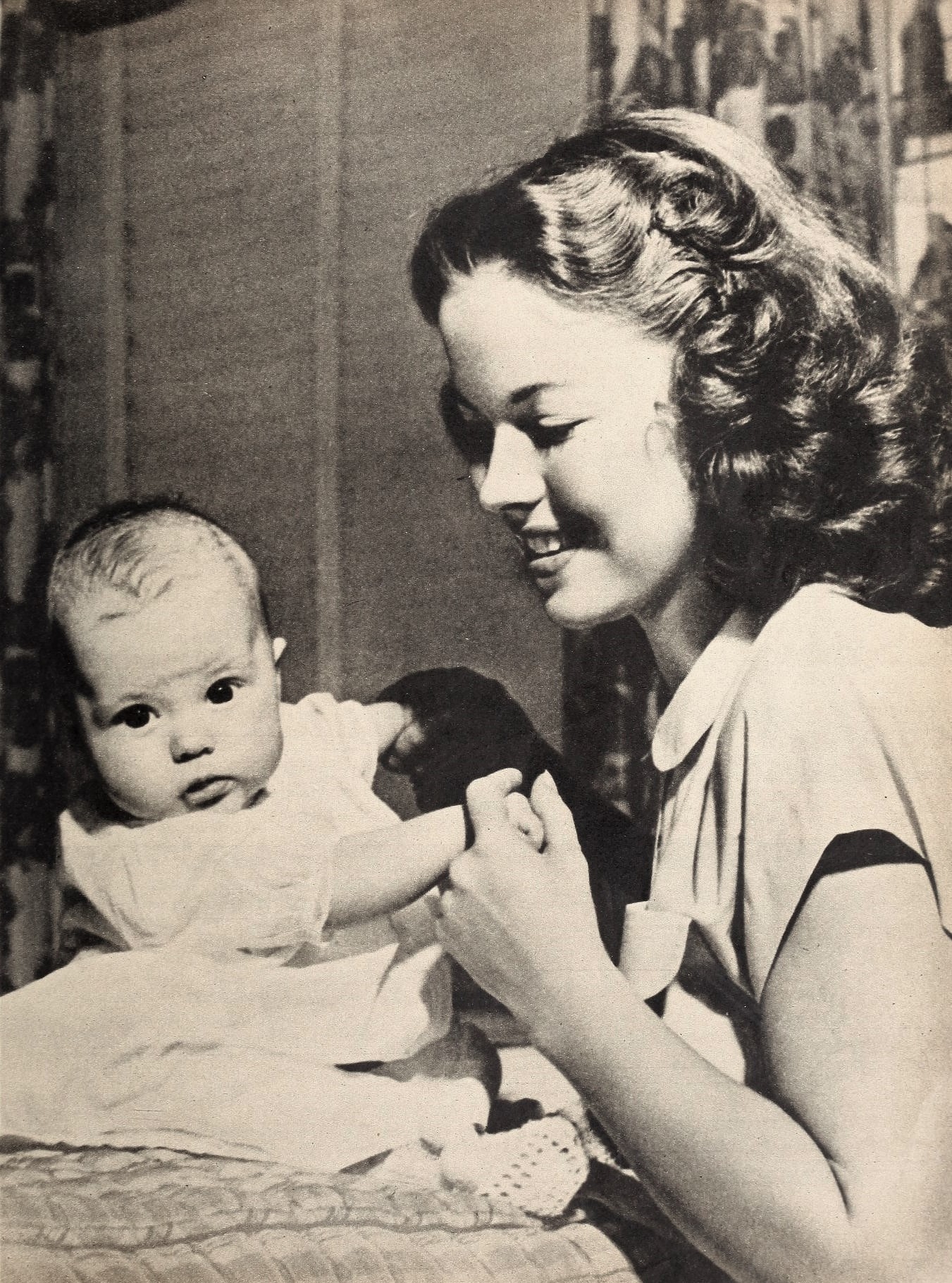
In 1950, while on vacation in Hawaii, Temple met Charles Alden Black at a cocktail party. Their meeting was described as a "fairytale" encounter, as both were unaware of each other's fame and background. Charles, a U.S. Navy lieutenant and son of the chairman of Pacific Gas and Electric Company, came from a prominent Puritan family that had immigrated to Massachusetts in 1620. He was a graduate of Stanford University and held an MBA from Harvard University. The FBI director J. Edgar Hoover even had Charles investigated to ensure he was a suitable match.
They married on December 16, 1950. This marriage was a happy and enduring one, lasting until Charles's death on August 4, 2005, from myelodysplastic syndromes. They had two children: a son, Charles Alden Black Jr. (born 1952), and a daughter, Lori Black (born 1954), who later became a bassist for the rock band Melvins and a photographer. Shirley also had a granddaughter, Theresa Falaschi, from her eldest daughter Susan.
Their marriage led to Charles being removed from the social register, as traditional upper-class American society, influenced by Puritan values, often excluded those married to actors. However, this did not bother the couple. Temple, who had retired from film in 1950, briefly considered a career as an interior decorator in 1954, but abandoned the idea due to public curiosity. She focused on raising her three children, maintaining a simple lifestyle despite her wealth. She also cared for her elderly parents, Gertrude and George, at home, personally preparing meals for her father after he became physically disabled due to a stroke. She described her 55-year marriage to Charles as "fairytale-like."
5.2. Health
Shirley Temple Black was generally healthy but faced two significant health challenges. During the birth of her eldest son, she suffered a life-threatening complication due to medical malpractice by a surgeon with an undiagnosed brain tumor. She recovered after the military replaced her doctor.
At age 44 in 1972, Temple was diagnosed with breast cancer. At a time when cancer was often discussed in hushed tones, her public disclosure of her diagnosis and subsequent mastectomy was a groundbreaking moment. She chose a breast-conserving surgery, which was experimental in Europe at the time, making her one of the first prominent women in the U.S. to undergo and openly discuss it. Her decision significantly contributed to improving breast cancer awareness and reducing the stigma surrounding the disease. She famously urged women, "Don't just sit there and be afraid. Go out and get a mammogram."
6. Social Impact and Evaluation
Shirley Temple Black's influence extended far beyond her acting and diplomatic careers, shaping popular culture and earning widespread acclaim.
6.1. Influence in Popular Culture

Temple's lasting impact on popular culture is profound. She transformed children's fashions, popularizing a toddler look for girls up to age 12. Her image was widely merchandised, with Shirley Temple dolls and clothing lines selling explosively worldwide. Even today, original Shirley Temple dolls are highly sought after by collectors, with some fetching hundreds of thousands of dollars.
Her name is also immortalized by the non-alcoholic cocktail, the Shirley Temple, created for her at the Hollywood Brown Derby restaurant in the 1930s. However, Temple herself found the drink too sweet and later brought a lawsuit to prevent a bottled soda version from using her name without authorization.
Her cultural presence is evident in various forms:
- On June 9, 2021, she was featured on a Google Doodle celebrating the opening anniversary of a special exhibit of her memorabilia.
- The name "Shirley" became popular for girls in the U.S. and UK during the 1930s, with actress Shirley MacLaine being named after her.
- Two plant varieties, a sweet pea and a peony, are named "Shirley Temple."
- In literature, she is referenced in James Thurber's short stories.
- She made two appearances on the album cover of The Beatles' Sgt. Pepper's Lonely Hearts Club Band, making her one of only two non-Beatles to appear twice.
- Her films continue to be referenced in popular media, such as the character Ginger in Shrek the Third singing "On the Good Ship Lollipop," and episodes of The Simpsons featuring parodies of her.
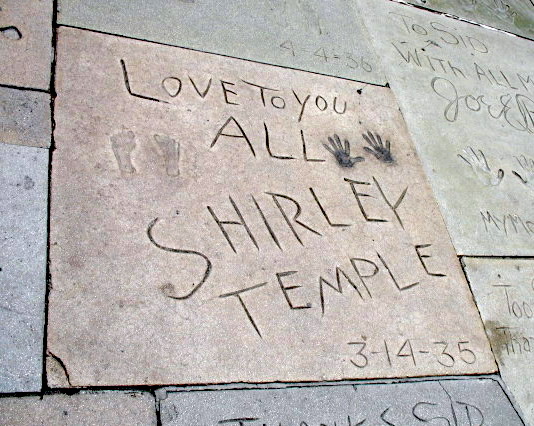
In 1934, at age six, she left her hand and foot impressions in the cement at Grauman's Chinese Theatre in Hollywood. Her foot impression was the first ever done barefoot, a quick improvisation when a baby tooth fell out mid-ceremony, to divert attention from her mouth. A small, gold-leafed statue of young Shirley Temple once stood at the entrance of the 20th Century Fox headquarters, serving as a reminder of her role in saving the company from bankruptcy. The studio's on-site childcare center was also named the Shirley Temple Daycare Center.
6.2. Positive Evaluations
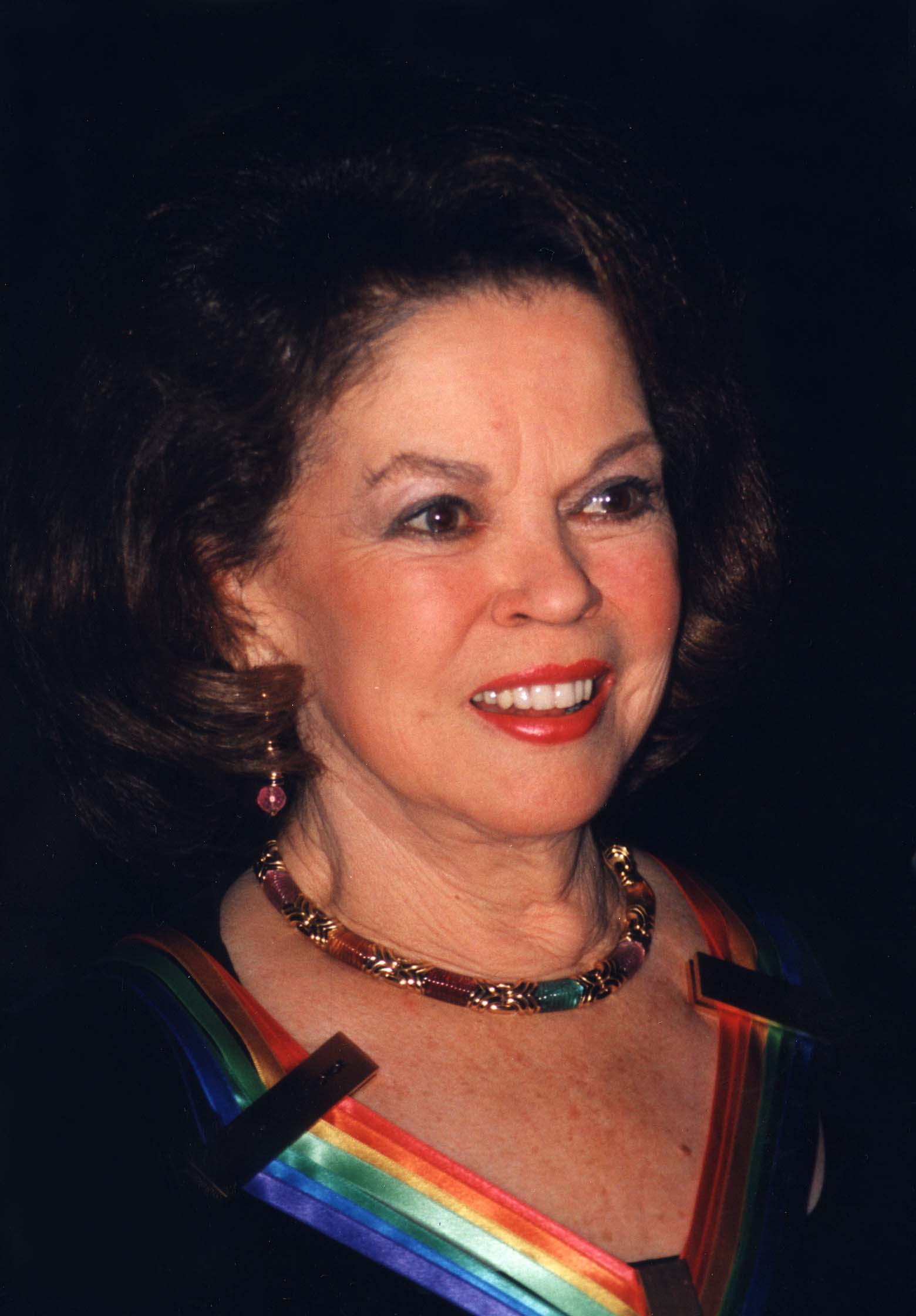
Shirley Temple Black received numerous accolades throughout her life for her contributions to both entertainment and public service. In 1935, she was awarded a special Academy Award for her outstanding performances as a child actress. Fifty years later, in 1985, the Academy honored her again with a full-sized Oscar statue.
She is ranked 18th on the American Film Institute's list of the greatest female American screen legends of classic Hollywood cinema. In 1988, she received the Screen Actors Guild Life Achievement Award alongside Gene Kelly. In 1998, she was a recipient of the prestigious Kennedy Center Honors for her achievements in film, presented by President Bill Clinton. In 2006, she received the Screen Actors Guild Life Achievement Award, with the citation recognizing her contributions as both a child star and a diplomat dedicated to peace and human rights.
Other honors include the Golden Plate Award of the American Academy of Achievement in 1970 and an award from the Freedoms Foundation of Valley Forge, Pennsylvania, in 1980.
Patsy Guy Hamontree, a professor at the University of Tennessee, summarized her legacy: "Shirley Temple Black's films as a child star have captivated audiences worldwide for over 70 years. She is praised for her exceptional talent and for leading a stable and fulfilling life after leaving the spotlight, unlike many child actors who struggle to adapt. She excelled as a wife, mother, diplomat, environmental advocate, and businesswoman."
6.3. Criticisms and Controversies
At the height of her popularity, Temple was the subject of many myths and rumors, some propagated by the Fox press department. Fox publicized her as a natural talent with no formal acting or dance training, though she did attend the Elisa Ryan School of Dancing for two weeks.
False claims circulated, especially in Europe, that Temple was not a child but a 30-year-old dwarf, partly due to her stocky build. This rumor was so prevalent that the Vatican dispatched a priest to investigate. The fact that she never seemed to miss any teeth fueled speculation; in reality, she regularly lost her primary teeth and wore dental plates and caps to hide the gaps during filming. Another rumor claimed her teeth had been filed to appear like baby teeth. Her trademark ringlets also led to rumors that she wore a wig, with fans sometimes yanking her hair to test the claim. Temple herself later lamented the tedious process of setting her curls nightly and the stinging weekly vinegar rinses.
A notable controversy involved British author Graham Greene. In 1937, Greene, then a film critic, wrote a review in Night and Day magazine suggesting that adult male viewers might feel sexual desire for the nine-year-old Shirley Temple after seeing her in Wee Willie Winkie. This caused public outrage in Britain and led to a lawsuit from 20th Century Fox, which Greene lost, resulting in the magazine's closure (though it was already facing financial difficulties). Greene's critique was seen as bizarre given Temple's innocent image. However, later revelations about Greene's own lolita complex and alleged involvement in child prostitution in Haiti led to a reinterpretation of his review as a reflection of his personal predilections.
7. Awards and Honors
Shirley Temple Black received numerous awards and honors throughout her life:
- 1935**: Miniature Juvenile Oscar
- 1935**: Handprints and footprints at Grauman's Chinese Theatre, Hollywood
- 1939, 1989, 1999**: Grand Marshal of the Rose Parade in Pasadena
- 1960**: Star on the Hollywood Walk of Fame (1500 Vine Street)
- 1970**: Golden Plate Award of the American Academy of Achievement
- 1975**: Honorary Deputy Paramount Chief of the Oguaa people of Ghana
- 1980**: Honored by the Freedoms Foundation of Valley Forge, Pennsylvania
- 1985**: Full-sized Academy Award (in tribute)
- 1987**: First Honorary Foreign Service Officer in U.S. history
- 1988**: Screen Actors Guild Life Achievement Award (with Gene Kelly)
- 1998**: Kennedy Center Honors
- 1999**: Ranked 18th on the American Film Institute's list of the greatest female American screen legends
- 2005**: Screen Actors Guild Life Achievement Award
8. Death
Shirley Temple Black died at age 85 on February 10, 2014, at her home in Woodside, California, surrounded by her family. Her death certificate, released on March 3, 2014, stated the cause of death as chronic obstructive pulmonary disease (COPD). Temple was a lifelong cigarette smoker but kept her habit private to avoid setting a bad example for her fans. Her family released a statement saying, "We salute her for a life of remarkable achievements as an actress, as a diplomat, and most importantly as our beloved mother, grandmother, great-grandmother, and adored wife of the late Charles Alden Black." She is buried at Alta Mesa Memorial Park.
9. Filmography
- The Red-Haired Alibi (1933)
- Out All Night (1933)
- To the Last Man (1933)
- Carolina (1934)
- Mandalay (1934) (scenes cut)
- As the Earth Turns (1934)
- Stand Up and Cheer! (1934)
- Change of Heart (1934)
- Little Miss Marker (1934)
- Now I'll Tell (1934)
- Baby Take a Bow (1934)
- Now and Forever (1934)
- Bright Eyes (1934)
- The Little Colonel (1935)
- Our Little Girl (1935)
- Curly Top (1935)
- The Littlest Rebel (1935)
- Captain January (1936)
- Poor Little Rich Girl (1936)
- Dimples (1936)
- Stowaway (1936)
- Wee Willie Winkie (1937)
- Heidi (1937)
- Ali Baba Goes to Town (1937) (uncredited cameo)
- Rebecca of Sunnybrook Farm (1938)
- Little Miss Broadway (1938)
- Just Around the Corner (1938)
- The Little Princess (1939)
- Susannah of the Mounties (1939)
- The Blue Bird (1940)
- Young People (1940)
- Kathleen (1941)
- Miss Annie Rooney (1942)
- Since You Went Away (1944)
- I'll Be Seeing You (1944)
- Kiss and Tell (1945)
- Honeymoon (1947)
- The Bachelor and the Bobby-Soxer (1947)
- That Hagen Girl (1947)
- Fort Apache (1948)
- Mr. Belvedere Goes to College (1949)
- Adventure in Baltimore (1949)
- The Story of Seabiscuit (1949)
- A Kiss for Corliss (1949)
Short films:
- Merrily Yours (1932)
- Kid's Last Stand (1932)
- The Kid's Last Fight (1932)
- Glad Rags to Riches (1932)
- Runt Page (1932)
- War Babies (1932)
- The Pie-Covered Wagon (1932)
- New Deal Rhythm (1933)
- Kid in Hollywood (1933)
- Polly Tix in Washington (1933)
- Dora's Dunking Doughnuts (1933)
- Kid 'in' Africa (1933)
- What's to Do? (1933)
- Pardon My Pups (1934)
- Managed Money (1934)
- The Hollywood Gad-About (1934)
- Our Girl Shirley (1942)
- American Creed (1946)